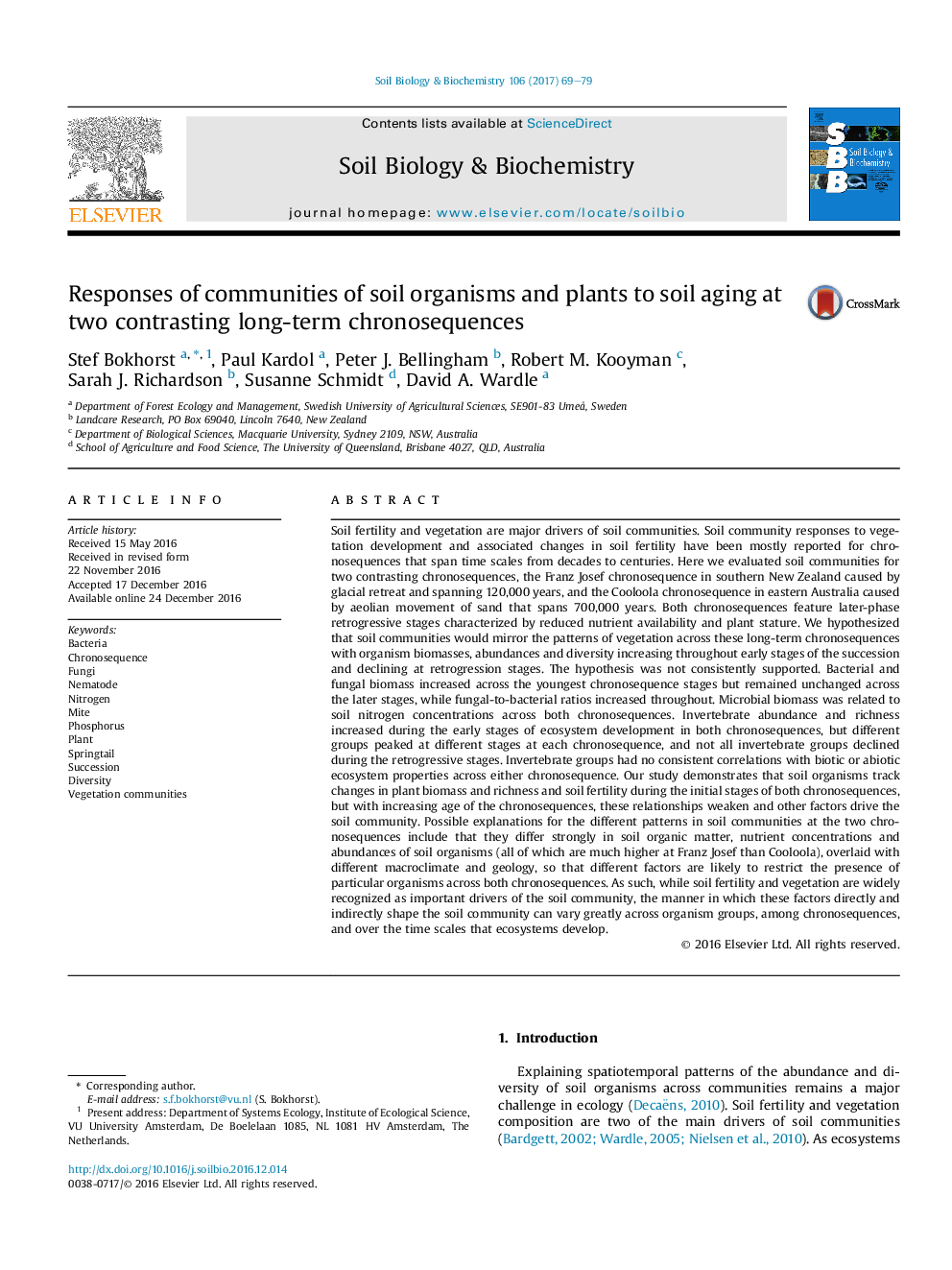| کد مقاله | کد نشریه | سال انتشار | مقاله انگلیسی | نسخه تمام متن |
|---|---|---|---|---|
| 5516571 | 1542578 | 2017 | 11 صفحه PDF | دانلود رایگان |
- Plant biomass, richness and soil fertility are primary drivers of soil communities.
- We tested these assumptions along two long-term soil chronosequences.
- Early-successional site components were good predictors of the soil community.
- The link between vegetation and soil communities weakened during retrogression.
- Predicting soil communities requires a better understanding of food web interactions.
Soil fertility and vegetation are major drivers of soil communities. Soil community responses to vegetation development and associated changes in soil fertility have been mostly reported for chronosequences that span time scales from decades to centuries. Here we evaluated soil communities for two contrasting chronosequences, the Franz Josef chronosequence in southern New Zealand caused by glacial retreat and spanning 120,000 years, and the Cooloola chronosequence in eastern Australia caused by aeolian movement of sand that spans 700,000 years. Both chronosequences feature later-phase retrogressive stages characterized by reduced nutrient availability and plant stature. We hypothesized that soil communities would mirror the patterns of vegetation across these long-term chronosequences with organism biomasses, abundances and diversity increasing throughout early stages of the succession and declining at retrogression stages. The hypothesis was not consistently supported. Bacterial and fungal biomass increased across the youngest chronosequence stages but remained unchanged across the later stages, while fungal-to-bacterial ratios increased throughout. Microbial biomass was related to soil nitrogen concentrations across both chronosequences. Invertebrate abundance and richness increased during the early stages of ecosystem development in both chronosequences, but different groups peaked at different stages at each chronosequence, and not all invertebrate groups declined during the retrogressive stages. Invertebrate groups had no consistent correlations with biotic or abiotic ecosystem properties across either chronosequence. Our study demonstrates that soil organisms track changes in plant biomass and richness and soil fertility during the initial stages of both chronosequences, but with increasing age of the chronosequences, these relationships weaken and other factors drive the soil community. Possible explanations for the different patterns in soil communities at the two chronosequences include that they differ strongly in soil organic matter, nutrient concentrations and abundances of soil organisms (all of which are much higher at Franz Josef than Cooloola), overlaid with different macroclimate and geology, so that different factors are likely to restrict the presence of particular organisms across both chronosequences. As such, while soil fertility and vegetation are widely recognized as important drivers of the soil community, the manner in which these factors directly and indirectly shape the soil community can vary greatly across organism groups, among chronosequences, and over the time scales that ecosystems develop.
Journal: Soil Biology and Biochemistry - Volume 106, March 2017, Pages 69-79
